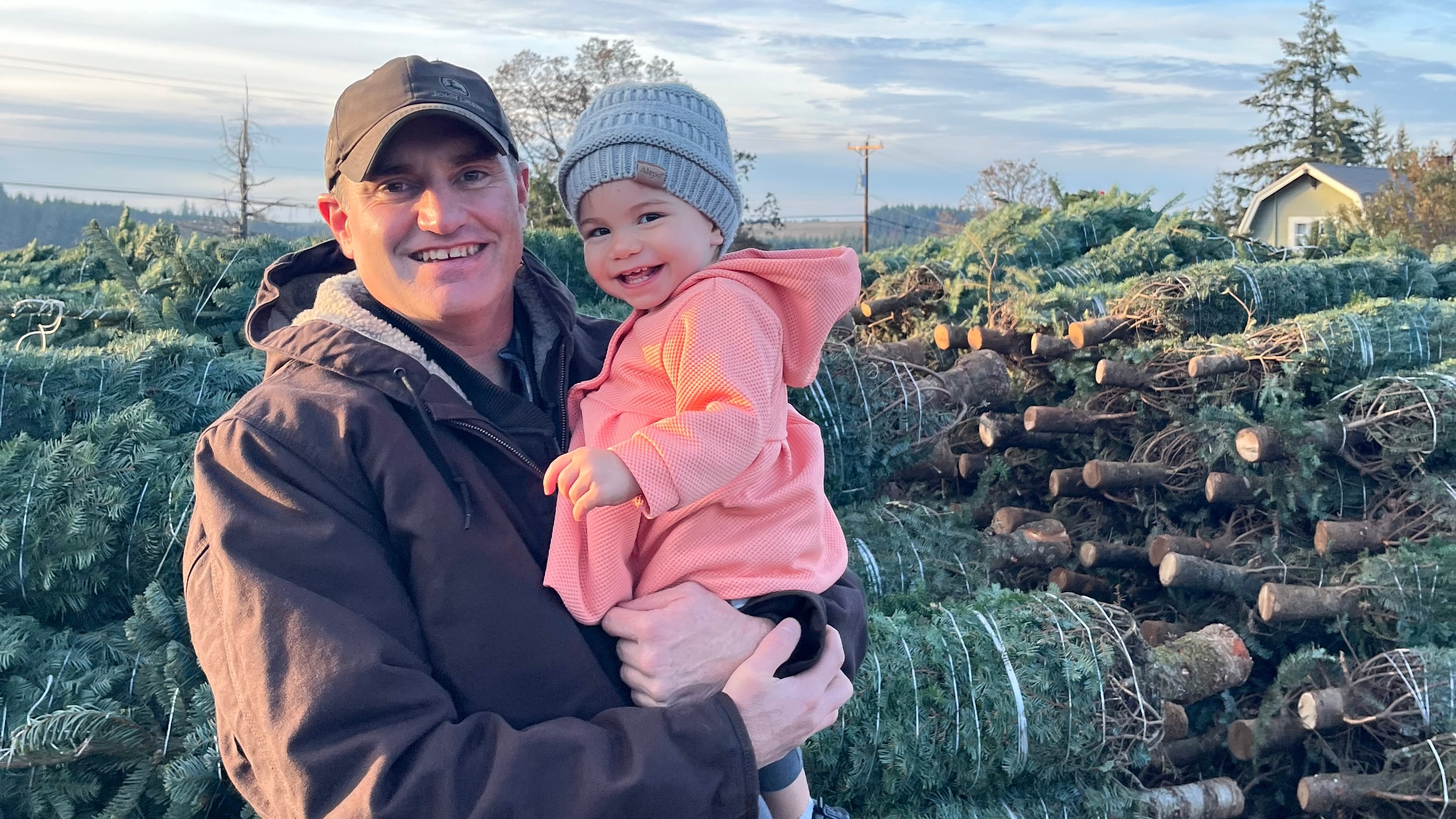Oregon is the nation’s largest producer of Christmas trees, by a long shot.
In 2019, the latest year for which government data is available, the state shipped 3.8 million trees worth $110.3 million. North Carolina came in second at 2 million trees worth $67.2 million. Oregon trees travel as far as Mexico and Singapore.
It’s a big business and, lately, it’s been a good one, even though plastic trees keep taking sales by looking less fake. There was a big shakeout after the Great Recession of 2008. Lots of tree farmers switched to other crops, says Casey Grogan at Silver Bells Tree Farm near Silverton.
The ones that remain, like him, are getting good prices now, Grogan says. He declined to give a dollar amount. (The Christmas tree market is cutthroat, says Jeff Stone, executive director of the Oregon Association of Nurseries.) But a 6-foot, Oregon-grown Noble fir retails for $110 at a Northwest Portland tree lot.
It takes about eight years to grow a good Christmas tree. Because they hold their needles so well, the best are Noble firs, which are common in Oregon, and Nordmann firs, a species that originated in the Caucasus Mountains in Georgia, Grogan says. He grows both.
Grogan, 46, recently bought Silver Bells from his parents, who started with one plot of land in 1976, right around the time Grogan was born. Now, he has 500 acres. He only sells wholesale, so don’t go looking to cut your own at his farm.
WW spoke to Grogan about capturing the market and growing firs in a heat dome.
WW: So, it’s looking like a merry Christmas for tree growers?
Casey Grogan: Yes. Before 2008, there was a major oversupply of Christmas trees in the Northwest, and that drove prices down below the cost of production. About half the farms either went out of business or switched to other crops, like hazelnuts or wine grapes. Now, there aren’t as many trees out there, and the price has gone up dramatically.
How’s the competition from fake trees?
Fakes always cut into sales. There are substantially more fake trees being displayed for Christmas than real trees. It’s somewhere around 80% fake to 20% real. We bank on the fact that there will always be people who want real trees. Lots of people think that fake trees are better for the environment, but nothing could be further from the truth. They’re made out of plastic in factories in China. Our trees are grown from the soil here in the U.S., and they’re a recyclable product. They can be mulched. They’re used as fish habitat.
How did your parents get into the business?
When they bought their property, they cleared the tall grass and discovered some seedlings planted out back that came with the property. They thought they’d try and grow them and figured it out. They sold their first crop, then purchased a parcel of land here and there, and it’s grown into what it is.
Do you get most of the year off, while the trees grow?
No. As soon as we get done with shipping this month, we’ll take a quick break and then start grinding the stumps on the fields we cut. Then we’ll plow and get ready to plant seedlings. Once we hit springtime, we have to work on pest management. All year, we’re using shearing knives to shear the trees into conical shapes.
Has climate change affected your business?
The heat dome in June last year was unique for everyone, and it certainly affected us. We worry about the younger trees. We’re a nonirrigated crop, so we have to get the young ones established. We’ve had more drought conditions in the last three or four years, so we’re probably losing a few more than we have historically. Over the years, you learn that those things are going to happen and you just keep planting and planting and planting.
How do you prepare trees for shipment?
We have a machine called a baler that wraps them in string and turns all the branches upright to protect them during shipment, and so we can fit more on a truck.
Any tips for buyers?
Water them, especially in the first 24 to 48 hours. They’ll really suck it up. If a tree runs out of water, it will form a sap seal on the bottom and it won’t drink any more.

